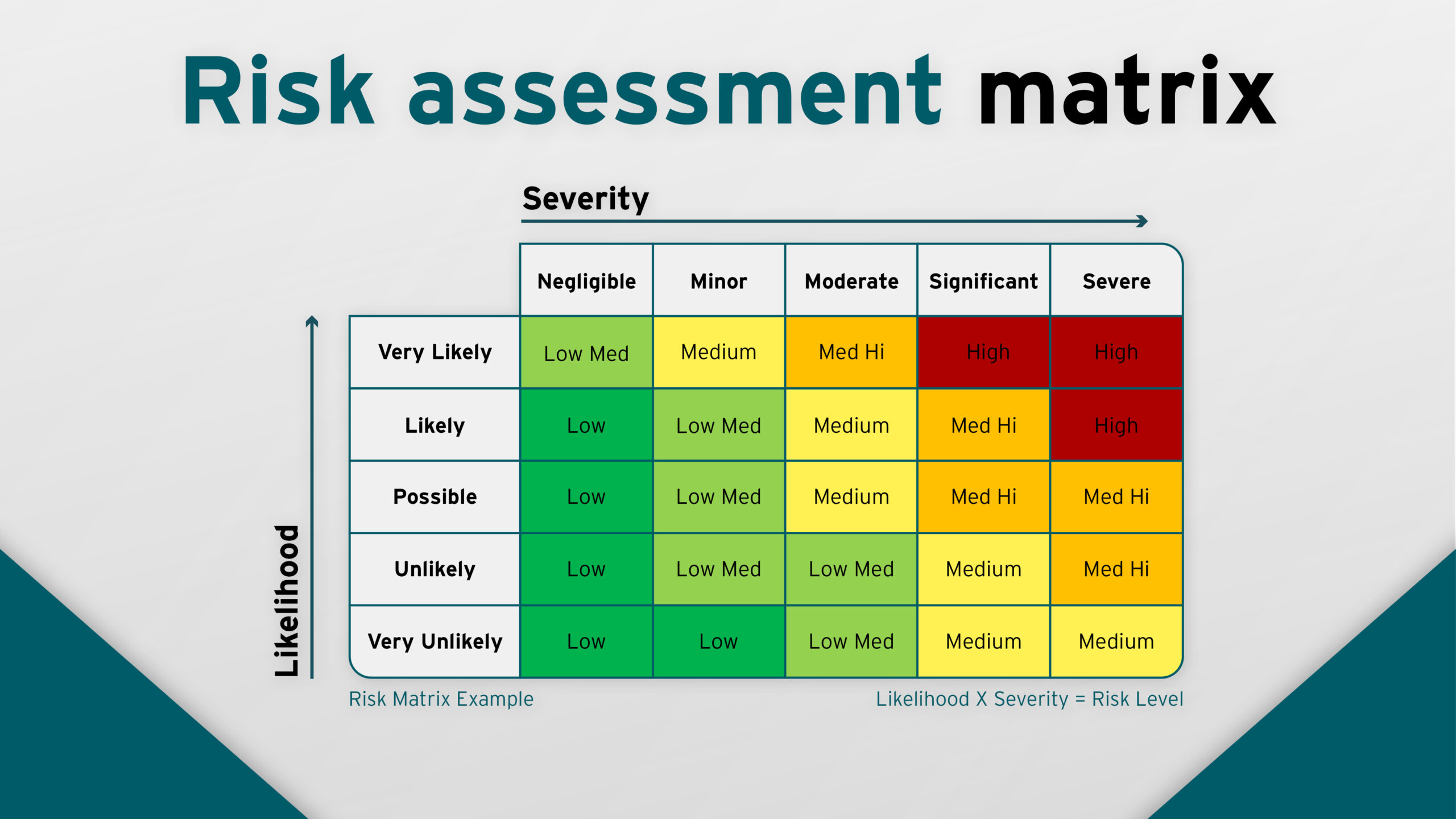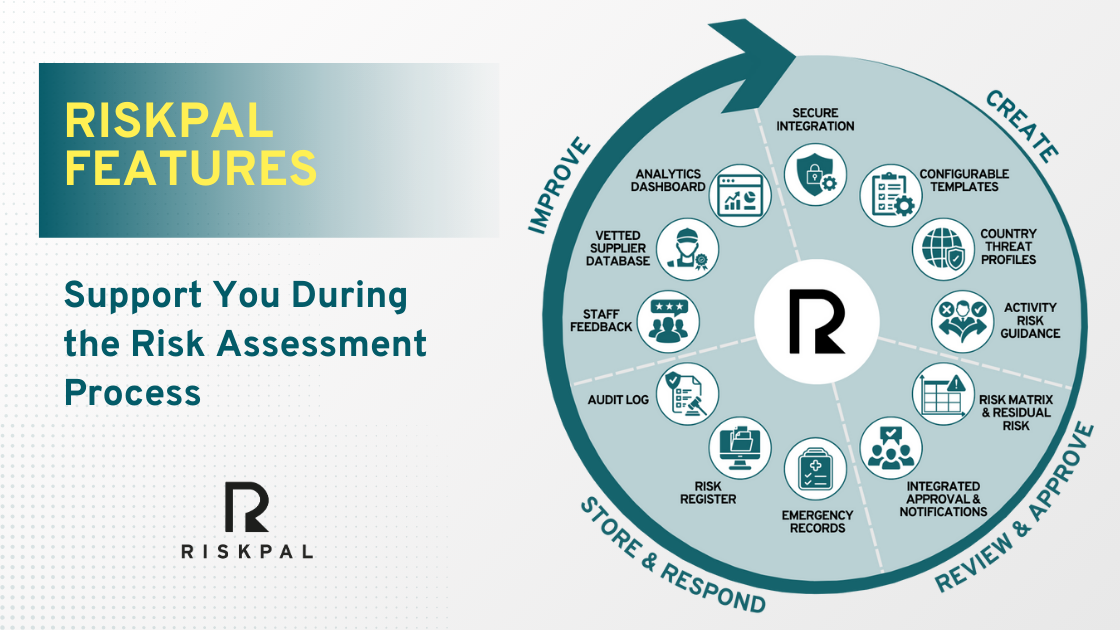
Risk Assessment Matrix
What is a risk assessment matrix?
A risk assessment matrix is a popular tool for visualising and evaluating risk. It typically takes the form of a chart or table where likelihood is plotted against severity (impact) in a structured grid, allowing users to quickly assess risk levels.
Depending on where a risk falls within the matrix, it can be categorised as low, medium, or high, helping organisations or businesses prioritise mitigation efforts effectively.
Why do I need a risk assessment matrix?
A risk assessment matrix can be part of the risk assessment process and helps businesses and organisations understand how their activities align with their risk appetite. While high-risk activities may yield substantial rewards, the potential cost when things go wrong may be too great for the organisation to bear.
This visual tool allows businesses to systematically analyse their risks and prioritise those that require urgent mitigation while identifying those that can be borne. Risk matrices therefore help with the in the decision-making process of what levels of controls need to be implemented by providing a structured way to assess exposure and evaluate whether the risks being undertaken are proportionate to the potential rewards.

Are risk assessment matrices controversial?
While popular, risk matrices are somewhat controversial. A key concern is subjectivity — many of the decisions made about risk levels reflect little more than the view of the person doing the assessment, meaning the results can vary from person to person. However, these judgments are often presented as objective fact, which can be misleading.
Additionally, risk matrices provide only a snapshot of the threat landscape at a given moment. To maintain accuracy, assessments must be updated regularly throughout an activity or project. This ongoing process is known as a dynamic risk assessment and should be part of every risk assessment.
The continuous process of identifying hazards, assessing risk, taking action to eliminate or reduce risk, monitoring and reviewing, in the rapidly changing circumstances of an operational incident is known as a dynamic risk assessment.
Because of these challenges, it is highly recommended to consult subject matter experts or safety representatives and incorporate a formal review process into risk assessments. This helps enhance accuracy, reduce bias, and ensure risk management decisions are well-informed.
RiskPal: Smarter Risk Assessment with Built-in Risk Matrices
RiskPal takes the guesswork out of risk assessment by integrating a customisable risk matrix directly into its digital risk assessment templates. This feature allows users to visually map out risks, ensuring a structured and consistent approach to evaluating likelihood and impact. With real-time collaboration and dynamic risk updates, RiskPal helps organisations make informed, data-driven decisions with ease. Watch how it works:
To learn more about how RiskPal can streamline your risk management process and enhance decision-making, reach out to our team today.



